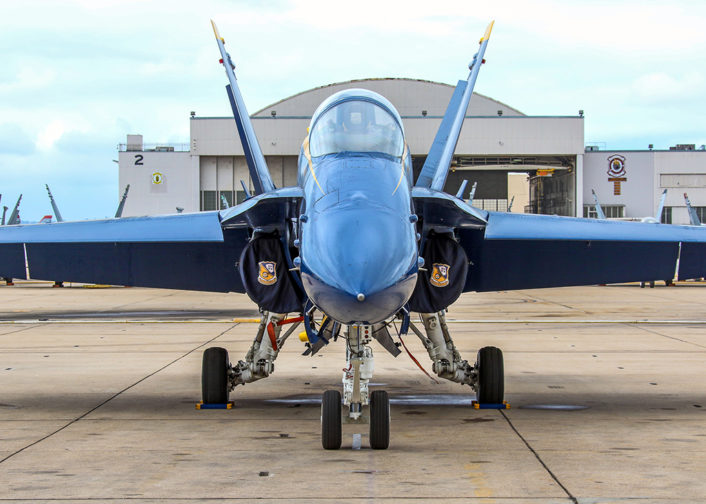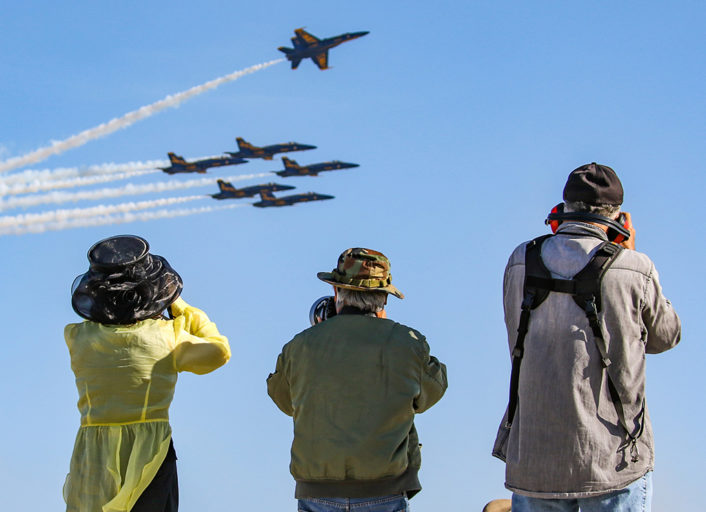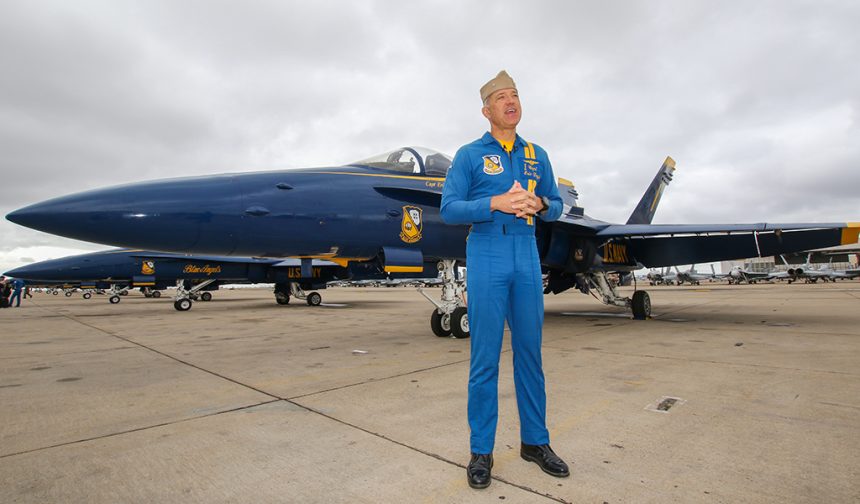We Asked Capt. Eric Doyle About How Super Hornets Will Change Blue Angel Demo.
Despite a gusty crosswind ripping over MCAS Miramar, we managed to have a quick conversation with 2019 Blue Angel #1 and team commander, Capt. Eric Doyle, about the upcoming transition from the team’s current Boeing F/A-18C and D model aircraft to the larger and more capable Boeing F/A-18E and F Super Hornets for the 2021 show season.
Capt. Doyle was at MCAS Miramar outside San Diego, California late last year when TheAviationist.com spoke to him about a number of topics before the final year of the F/A-18C/D Hornet and before Capt. Doyle handed over command of the Blues to their newest boss, Commander Brian C. Kesselring originally from Fargo, North Dakota.
“Our goal is to make it seamless,” Capt. Doyle told The Aviationist. “You’ll see blue jets appear in another year that are Super Hornets, that are going to look a lot like this one. They’re F-18s, so they’re built by Boeing, and the demo will look very similar.”
As most readers know, the F/A-18E/F Super Hornet is significantly different from the aircraft many now refer to as the “Legacy Hornet”. While the Navy has transitioned away from the older versions of the Hornet to the new Super Hornet, the U.S. Marine Corps (and some residual USN units) still fly a significant number of F/A-18C Hornets.
According to the official Blue Angel page, “The Super Hornet is 25% larger, can fly 40% further, remain on station 80% longer and carry more weapons than its predecessors. The Super Hornet F/A-18 E/F models have deployed with battle groups since 2001.”
More specifically, the new F/A-18 E/F Super Hornet has a wingspan that is 4’ 3.6” wider than a legacy Hornet- over four-feet more wingspan. The Super Hornet is also 4’ 3” longer than the Hornet and sits nearly one-foot higher at the top of its twin tails. These larger dimensions may make the new Blue Angel Super Hornets even easier to see and photograph at demonstrations.

There are, obviously, significant performance differences between the legacy Hornet and the Super Hornet. In a July 2019 article published on SOFREP.com by contributor “G.M.”, a pilot who has flown both aircraft told the website, “At lower altitudes, the Rhino’s [Super Hornet] engines produce much more thrust than the Hornet’s. This allows for improved energy addition and sustained turn rate. Maintaining airspeed while pulling high G is much easier than it was before.” This may make the low-altitude, tight-turning performances of the Blue Angel solos even more impressive.
“We’re going to finish next season and transition right into next season with brand new airplanes, well, not brand new airplanes- they’re new to us. What’s interesting about our team is we fly the oldest F-18s in the Navy right now. Our goal is to give the newest and greatest airplanes to the fleet” Capt. Doyle told TheAviationist.
Whether the differences in performance between the two aircraft from the 2020 to 2021 show season are conspicuous or not, one certainty is that this show season in the legacy Hornets, which the team has now flown for 34 years, will be a season to remember and next year, the team’s first in their new Super Hornets, will be another historic transition in flight demonstration.










